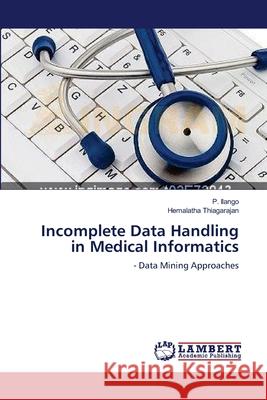Incomplete Data Handling in Medical Informatics » książka
Incomplete Data Handling in Medical Informatics
ISBN-13: 9783659112003 / Angielski / Miękka / 2012 / 116 str.
The recent advancement in databases, data mining and data warehousing have promoted edge over technologies to acquire, represent, process, and manage data and knowledge related to health and healthcare in Medical Informatics. The innovations in computer assisted approaches address the challenges in several real life diagnostic and prognostic studies and expert systems. Data Mining, Machine Learning, and Artificial Neural Network are some of the widely used techniques in Medical Informatics to derive useful knowledge over the patient records which enhance the quality of diagnosis and effectiveness of the treatment. The performance of the data mining algorithms solely depends on the nature and quality of the sample taken as training dataset. The large quantities of cumulative data collected from various OLTP sources are not commensurate with either the structure or quality. Various qualitative deficiency factors such as incompleteness, inconsistency redundancy, and noise usually envelop the training data. In this book, various methods for the imputation of missing data are discussed, the performance are also evaluated and compared with the other existing methods
The recent advancement in databases, data mining and data warehousing have promoted edge over technologies to acquire, represent, process, and manage data and knowledge related to health and healthcare in Medical Informatics. The innovations in computer assisted approaches address the challenges in several real life diagnostic and prognostic studies and expert systems. Data Mining, Machine Learning, and Artificial Neural Network are some of the widely used techniques in Medical Informatics to derive useful knowledge over the patient records which enhance the quality of diagnosis and effectiveness of the treatment. The performance of the data mining algorithms solely depends on the nature and quality of the sample taken as training dataset. The large quantities of cumulative data collected from various OLTP sources are not commensurate with either the structure or quality. Various qualitative deficiency factors such as incompleteness, inconsistency redundancy, and noise usually envelop the training data. In this book, various methods for the imputation of missing data are discussed, the performance are also evaluated and compared with the other existing methods











